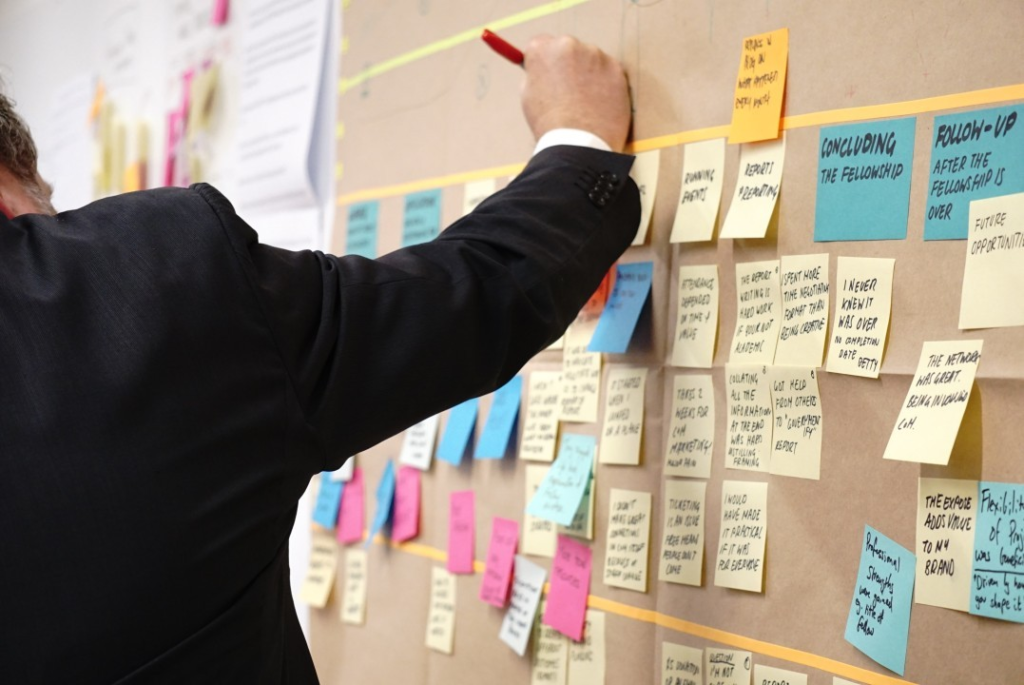Introduction
The use of speech makes it possible to reason, convince, convey ideas, points of view, influence others through words and how to transmit them. Speaking is for us adults an act as natural as breathing or walking. However, speech is the result of a long apprenticeship, and the way of expressing oneself strongly defines and characterizes our personality. The role of oral communication, both in the individual relationship and in front of a group, can also become a determining factor of success for all those who want to be heard and included in their professional activity. In this article, we will see in 5 main points, how to speak in public efficiently.
Be prepared
Written preparation is the basis of success: it frees the force of conviction of the speaker!
Here are the questions you should ask yourself during your speech’s preparation :
- What am I going to talk about? What topic interests my audience?
- What goal do I want to achieve, what action do I want to trigger in my audience?
- How much time do I have to convince?
- How much time will I spend on each point?
- What questions will I use in my presentation?
It is essential not to “read” a presentation, nor even to opt for the “by heart” solution, which takes quickly, lifeless and spontaneous recitation.
From a speech, Man retains only 20% of what is said. So use audiovisual tools (multimedia, PowerPoint…) to increase the retention of transmitted images. Let’s be careful to use them in order to make our presentations more lively and dynamic.
Stand up straight with your shoulders back
The study of non-verbal communication, that is to say one that uses neither spoken language nor writing allows us to understand the influence of our behavior towards our audience. Before communicating orally, we create and trigger, consciously and unconsciously, a whole network of codes, signs and information. Becoming aware of our posture allows us to control all behaviors that risk to influence our audience negatively or positively: our general appearance, our physical postures, our gait, or our body movements. If, for example, we have high shoulders, low heads, if we look impatient, if we let’s speak in a tone of fatigue, boredom or irritation, the audience can then interpret these signs bodily.
How can we prevent our audience from having these kinds of interpretations? Let us move away, first of all, from we thought that we could one day be in such a state of mind: let us keep in all circumstances a positive inner attitude ! And, on the rare occasions when we cannot rule out us negative thoughts, let our audience not be able to detect them, not even from the “decoding” of our body language.
To sum up, smile and be enthusiastic !

Master the audience using silence
In all the circumstances in which one is called upon to express oneself in front of an audience, it is essential to master all of his reactions. Is there better self-control than to be silent in front of your audience ? Silence controls the talkative or the external incident. Silence shows the mastery of the speaker, victim of a “blank” or a technical difficulty.
What is the first precaution to take for a radio transmitter before sending a message?
Make sure that the person you are talking to is ready to listen ! Being attentive, assessing the level of attention of those present allows to establish a climate of mutual respect, a form of silent complicity.
Use open questions
Introducing the subject through open questions, formulated in a positive way, allows us to capture our audience, to immediately grab their attention, arouse their interest and provoke their reflection. This introduction will stimulate our vocal dynamism and channel the concentrated energy before the beginning of our presentation. In addition, the three initial open questions set up the structure and presentation plan.
To conclude, open-ended questions will help to prolong the interest and attention of our audience and encourage them to think. This effective punctuation will perfectly delimit the different stages of the development of our subject, the announcement of a new point of the plan, and will help us to revive our own dynamism.
Call to action
What is the ultimate goal of all oral communication ? Obtain the support and agreement of our audience on the subject exposed. Concretely encourage action, set the audience in motion with gesture and voice. Our interlocutors not only want to “know”, but “to do”! And even more, to provoke a desired action from our public, linked to this membership. At the end of the presentation, closed questions will elicit affirmative responses and prompt participants to take concrete action.


